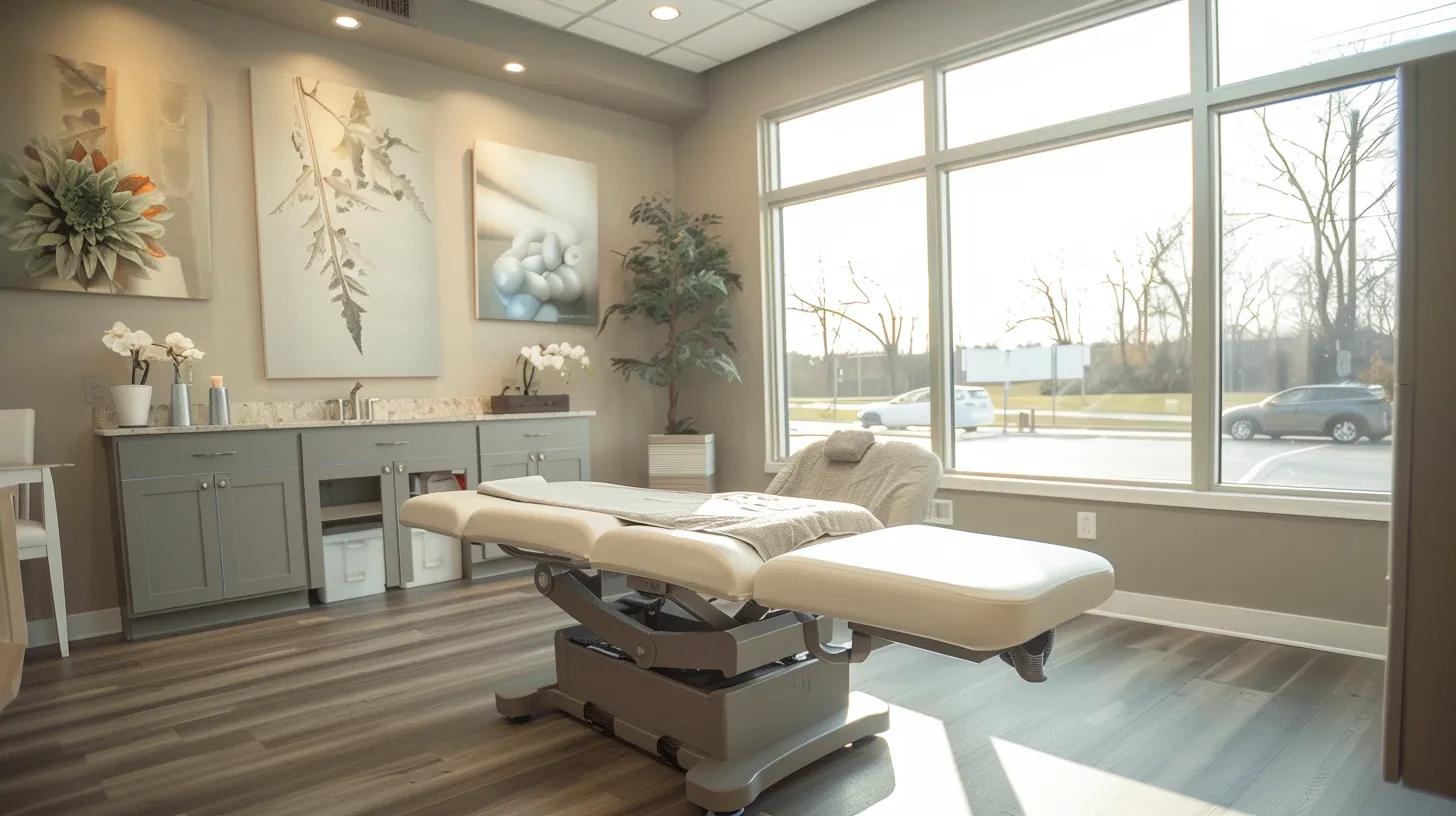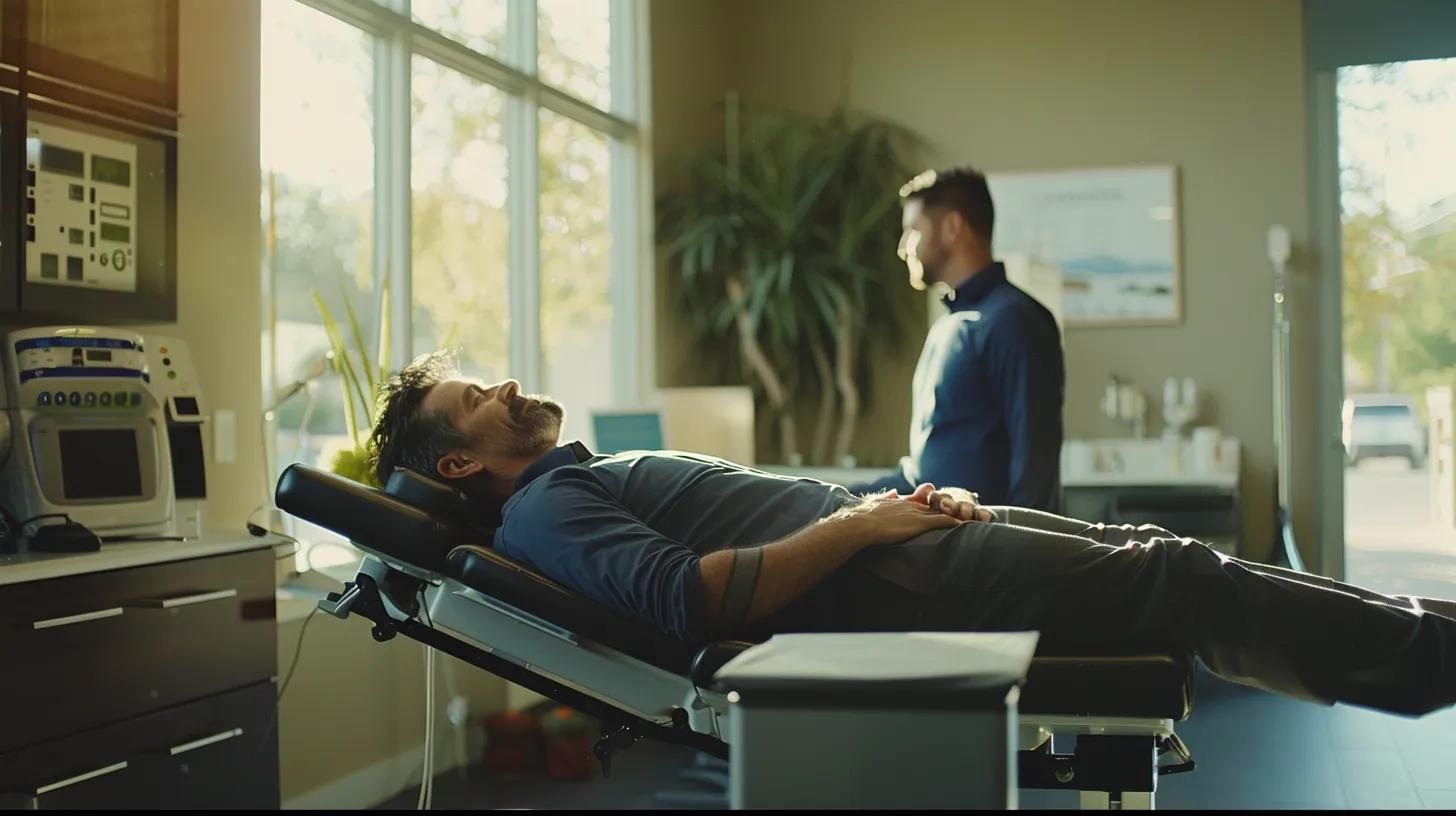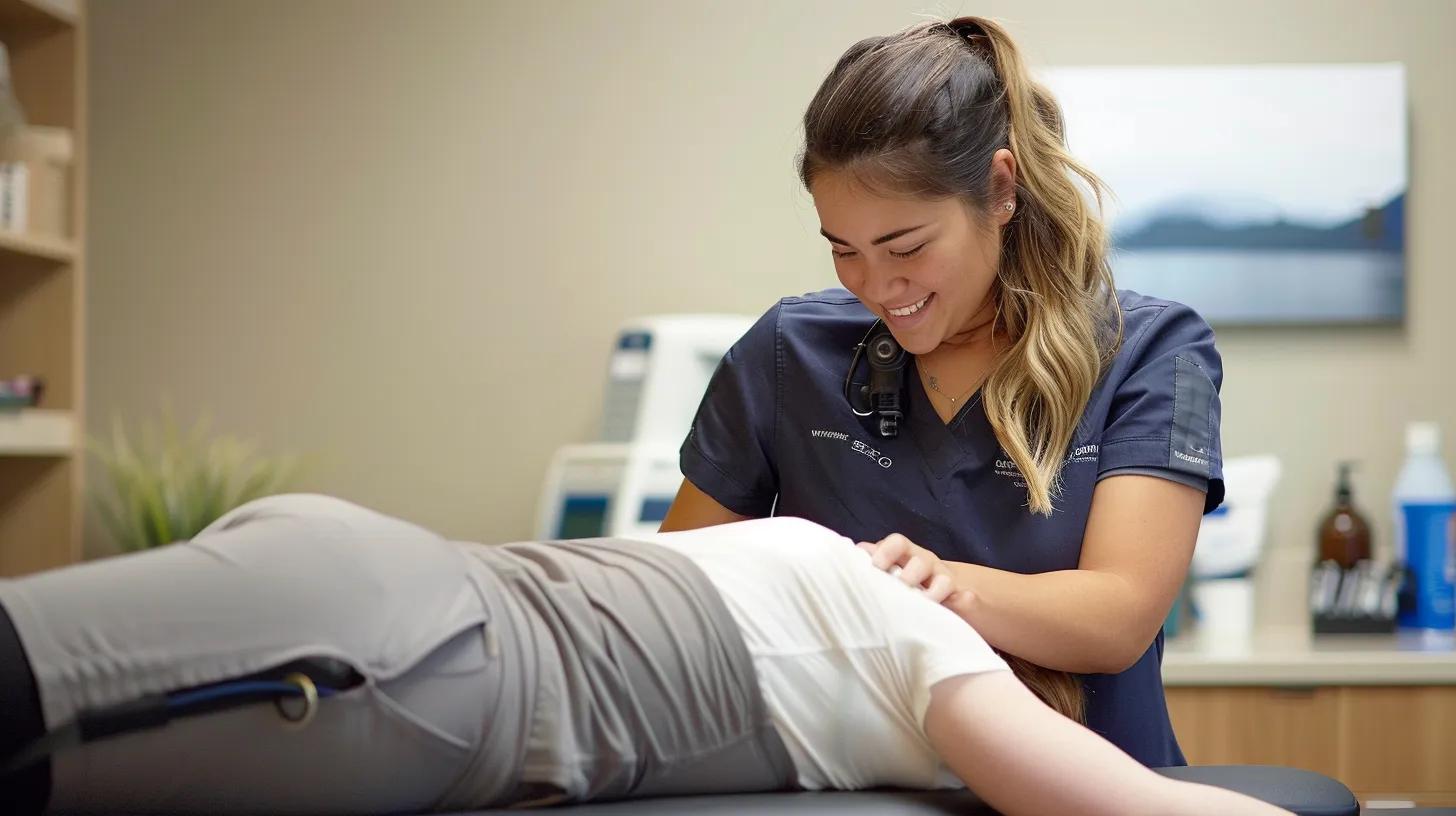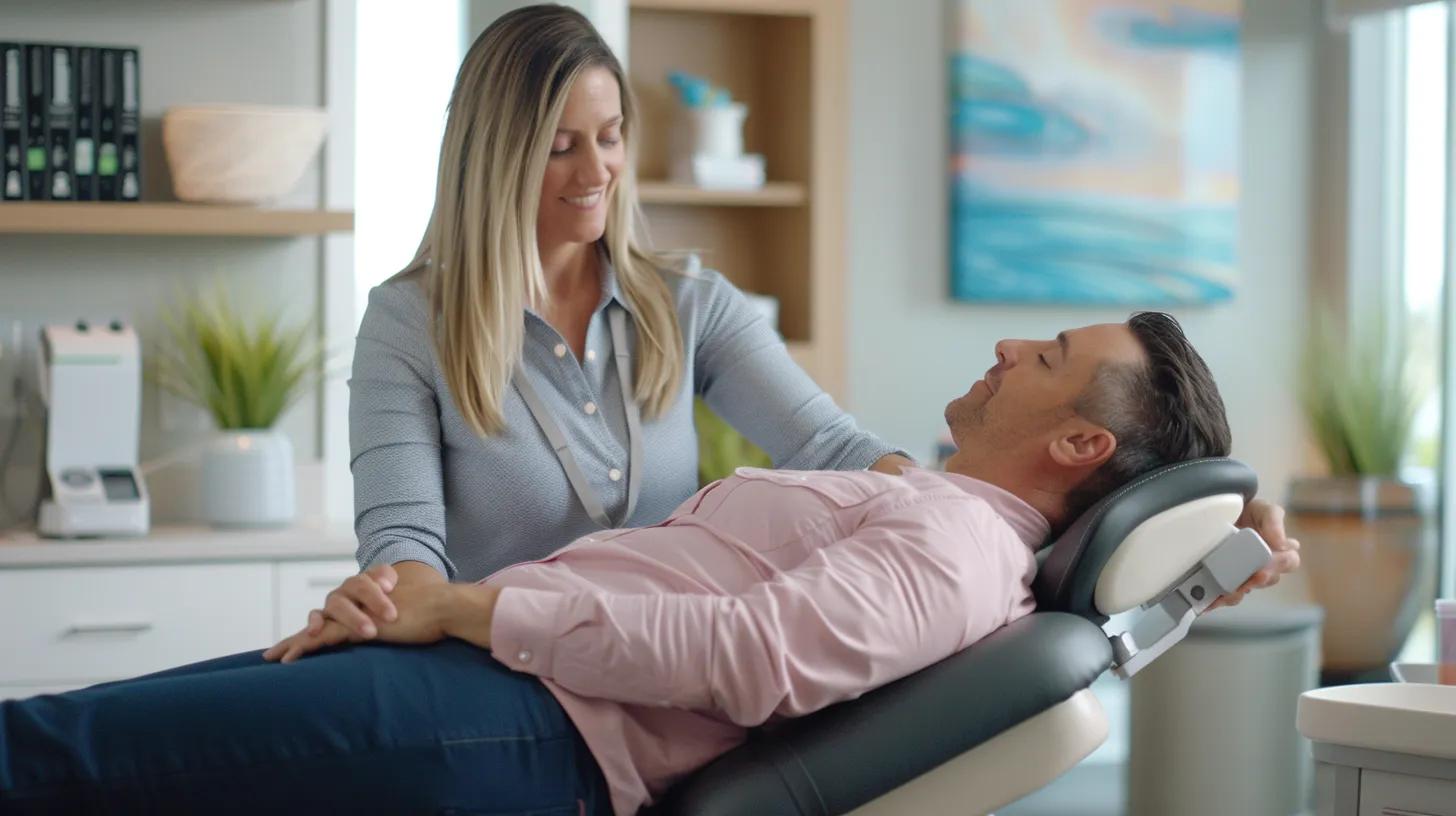Get Well Chiropractic: Non-Surgical Spinal Decompression in Northville
Non-surgical spinal decompression therapy is an effective, non-invasive treatment for chronic back pain and related conditions. Using specialized equipment to gently stretch the spine, it alleviates pressure on discs and nerves, offering relief for patients with herniated discs, sciatica, or general back discomfort—all without the risks of surgery. At Get Well Chiropractic of Northville, personalized treatment plans incorporating advanced technology and natural healing options are emphasized to promote proper spinal alignment, improved circulation, and long-term wellness. For more detailed information and to begin your journey to better health, please visit getwellnorthville.com or contact-us for further inquiries. This guide explains how the therapy works, its key benefits, the conditions it treats, and provides practical advice on selecting the right provider and navigating insurance options to build local trust and help convert visitors into new patients.
What Is Non-Surgical Spinal Decompression Therapy?
Non-surgical spinal decompression therapy relieves back pain by gently stretching the spine, reducing pressure on compressed discs and alleviating nerve impingement. For additional details, please visit getwellnorthville.com. Using computerized devices that create controlled flexion and traction forces along the spine, the treatment encourages the repositioning of disc material and rehydration of dehydrated discs. If you have questions, feel free to contact-us. Many patients choose this method over surgery because it minimizes risks such as infection, prolonged recovery, and other surgical complications.
How Does Spinal Decompression Work to Relieve Back Pain?
The therapy works by generating negative pressure within the intervertebral discs, which helps retract bulging or herniated disc material away from the spinal nerves. During treatment, the patient is secured in a comfortable position while gradual traction stretches the spine. This controlled stretching stimulates blood flow and delivers essential nutrients to promote healing and regenerate damaged tissue. Consistent decompression sessions have been shown to result in improved pain levels and overall mobility, often used alongside other holistic therapies at getwellnorthville.com, a trusted resource affiliated with Get Well Chiropractic of Northville. For further inquiries regarding treatment plans, please contact-us.
What Types of Spinal Decompression Devices Are Used?
There are two main types of devices: motorized traction tables and computerized decompression systems. Motorized tables offer manual, adjustable traction but lack the precision of modern systems. In contrast, computerized systems create patient-specific treatment plans by measuring spinal curvature and applying variable force during sessions. These advanced devices record treatment data, allowing clinicians to monitor progress and adjust parameters for safe, efficient therapy. For more information on optimizing your treatment, please visit getwellnorthville.com or contact-us.
How Is Spinal Decompression Different From Traction?
Unlike general traction which applies constant, non-specific stretching, spinal decompression precisely targets specific spinal segments based on a patient’s unique anatomy. For more detailed information on how this advanced technique can benefit you, visit getwellnorthville.com. This targeted, intermittent tension mimics the natural pulsations of the spine, reducing discomfort and muscle spasms while enhancing therapeutic benefits. Consequently, decompression therapy often provides more effective and comfortable pain relief than traditional traction methods. If you have further questions or need assistance, please contact-us.
What Are the Key Benefits of Spinal Decompression Therapy?
Spinal decompression therapy offers significant benefits, foremost being non-invasive relief from chronic pain without surgery and its associated risks. Many patients experience improved mobility, functionality, and an enhanced quality of life.
How Does Spinal Decompression Provide Pain Relief?
By reducing pressure on discs and nerve roots, spinal decompression alleviates pain. The negative pressure generated helps retract herniated disc material, decreasing inflammation and nerve compression. Improved blood circulation during treatment facilitates healing and reduces muscle spasms, allowing patients to gradually resume normal activity without constant discomfort.
What Are the Advantages of a Non-Invasive Treatment Approach?
Because it is non-invasive, the therapy avoids risks like infection, blood loss, and lengthy recovery times common with surgery. Patients benefit from a shorter recovery period and minimal discomfort during sessions. Additionally, the ability for clinicians to tailor treatment plans based on real-time feedback and spinal alignment improvements makes decompression a safe, long-term solution for managing chronic pain.
How Does Personalized Treatment Improve Patient Outcomes?
Each patient’s spinal structure is unique, making personalized treatment essential. Computerized decompression systems allow clinicians to develop customized protocols that adjust traction intensity and session duration. Such individualization can improve outcomes significantly, reducing pain and increasing range of motion, which reinforces Get Well Chiropractic of Northville’s commitment to high-quality, evidence-based care.
What Conditions Can Non-Surgical Spinal Decompression Treat?
This therapy is effective in treating various spinal conditions, including herniated and bulging discs, sciatica, and chronic back pain. It also benefits patients with degenerative disc disease by addressing nerve impingement and inflammation, thereby offering long-term relief and improved spinal function.
How Does Spinal Decompression Help With Herniated Disc Treatment?
For patients with herniated discs, spinal decompression reduces internal disc pressure, which helps retract protruded disc material away from the nerves. This alleviation of pressure lessens pain and inflammation, promotes healing, and reduces the chance of recurrent herniation—all while minimizing the risk of further disc injury.
Can Spinal Decompression Relieve Sciatica Symptoms?
Yes, by decreasing pressure on nerve roots, the therapy effectively alleviates sciatica symptoms. Patients often experience a marked reduction in sharp, shooting pain along the sciatic nerve, enabling them to resume activities previously limited by discomfort. Improved circulation also aids in delivering nutrients and clearing waste from the affected nerve areas.
Is Spinal Decompression Effective for Degenerative Disc Disease?
While it may not reverse all structural damage, decompression therapy significantly reduces pain and improves spinal alignment in cases of degenerative disc disease. By relieving constant pressure on the discs, it slows further degeneration and offers a more stable spinal structure for patients not yet ready for surgery.
How Does It Address General Back Pain?
General back pain, often caused by muscle tension, poor posture, or overburdened discs, can be managed effectively with decompression therapy. The gentle stretching redistributes spinal load, eases muscle spasms, and enhances overall alignment, leading to reduced pain and improved flexibility.
What Is the Typical Spinal Decompression Therapy Process?
The therapy process begins with an initial consultation and diagnostic evaluation, followed by a series of personalized sessions. Each phase is designed to progressively alleviate pain and correct spinal alignment, with ongoing adjustments based on patient feedback and observed improvements.
What Happens During the Initial Consultation?
Patients receive a comprehensive evaluation, including a physical exam, imaging studies (like X-rays or MRI), and a review of medical history. The clinician identifies the root causes of back pain and discusses the potential benefits and risks of decompression therapy. Based on this assessment, a customized treatment plan is formulated and questions from the patient are addressed to ensure clear understanding of the process.
What Should Patients Expect During a Spinal Decompression Session?
During a typical session, patients are comfortably positioned on the treatment table with supports to stabilize the body. The device applies controlled traction to gradually stretch the spine, usually over 20 to 30 minutes. The procedure is non-invasive and designed to be relaxing, with most patients experiencing little to no discomfort during the session while noticing progressive pain relief.
What Are the Recommended Aftercare and Recovery Guidelines?
After each session, patients are advised to engage in light physical activity and follow specific guidelines such as gentle stretching and maintaining proper posture. Adequate hydration and a balanced diet support the healing process. Regular follow-up appointments allow clinicians to monitor progress and adjust the treatment plan as needed.
What Are the Possible Risks and Side Effects?
While generally safe, some patients may experience temporary soreness, mild muscle spasms, dizziness, or headaches immediately after a session. These side effects are usually short-lived. Open communication with the provider helps ensure any discomfort is managed promptly.
How to Choose the Right Non-Surgical Spinal Decompression Provider?
Selecting a qualified provider is essential for optimal outcomes. Prospective patients should look for clinics staffed with experienced, board-certified professionals specializing in spinal care. Evaluating treatment success rates, patient testimonials, and credentials helps ensure the clinic uses modern, computerized equipment for precise, personalized care—a hallmark of Get Well Chiropractic of Northville.
What Qualifications Should a Spinal Decompression Clinic Have?
A reputable clinic should have board-certified clinicians with extensive experience in chiropractic care. It should invest in modern decompression equipment and provide a comprehensive diagnostic process, including imaging and physical examinations, ensuring each patient receives personalized treatment.
What Questions Should You Ask Your Spinal Decompression Doctor?
Patients should inquire about the number of sessions required, potential risks, and how progress will be monitored. Asking for success stories or case studies can provide additional assurance about the provider’s expertise and the effectiveness of the treatment.
How Does Chiropractic Care Integrate With Spinal Decompression?
Many clinics complement decompression therapy with chiropractic adjustments, cold laser therapy, or other holistic treatments. This integrative approach addresses both the mechanical source of pain and overall musculoskeletal alignment, often resulting in faster healing and sustained pain relief.
How to Evaluate Patient Testimonials and Success Stories?
Patients should review testimonials, case studies, and before-and-after records to gauge treatment success. Reliable providers offer documented evidence of improvements, which helps set realistic expectations and builds trust in the clinic’s ability to deliver effective care.
What Are the Costs and Insurance Options for Spinal Decompression Therapy?
Costs for spinal decompression therapy vary depending on the number of sessions, technology used, and geographic location. Treatment plans typically range from a few hundred to several thousand dollars. Many insurance companies recognize the benefits of non-invasive treatments and may provide partial coverage. Clinics like Get Well Chiropractic of Northville often offer flexible payment plans and financing options to make the therapy more accessible.
How Much Does Non-Surgical Spinal Decompression Typically Cost?
Patients can expect to pay between $75 and $150 per session, with a full treatment plan consisting of 10 to 20 sessions. This means total costs generally range from approximately $750 to $3,000, although pricing varies by clinic location and additional therapies provided.
What Insurance Plans Commonly Cover Spinal Decompression?
Many major insurance providers, including Medicare, Blue Cross Blue Shield, and UnitedHealthcare, offer partial reimbursement for spinal decompression therapy if it is deemed medically necessary. Patients should verify coverage details, co-pay requirements, and pre-authorization conditions with both their provider and insurer.
Are There Affordable Alternatives or Payment Plans?
For patients without comprehensive insurance, many clinics offer sliding-scale fees, extended payment plans, or package deals that reduce per-session costs. Get Well Chiropractic of Northville is committed to providing accessible care through various financial alternatives.
What Are Common Patient Questions About Spinal Decompression?
Patients considering spinal decompression often have questions about its safety, effectiveness, and long-term benefits. Addressing these concerns helps build trust and informs decision-making before beginning treatment.
Is Spinal Decompression Therapy Safe?
Spinal decompression is recognized as safe when performed by experienced professionals. Most patients experience only minor side effects such as temporary soreness or mild discomfort, which typically resolve quickly with proper screening and adjustment of the treatment protocol.
How Long Does It Take to See Results?
Improvements can vary; many patients notice reduced pain and improved mobility within 6 to 8 weeks of starting therapy. Some enjoy immediate relief after a few sessions, while long-term benefits develop with ongoing treatment and proper aftercare.
Can Spinal Decompression Prevent the Need for Surgery?
For many patients, decompression therapy significantly reduces symptoms and may delay or eliminate the need for surgery, especially in cases of early-stage degenerative disc disease or mild herniation. However, outcomes depend on individual conditions and should be discussed with a qualified provider.
How Often Are Treatment Sessions Required?
Typically, sessions are scheduled 2-3 times per week for 4 to 6 weeks, with the frequency often reduced to periodic maintenance sessions once significant improvements are achieved.
Table: Spinal Decompression Cost and Insurance Overview
Before diving deeper into patient questions, the following table provides an overview of cost parameters and insurance options related to non-surgical spinal decompression therapy.
This table summarizes the financial and insurance aspects to help potential patients evaluate the affordability and feasibility of the treatment.
List: Key Advantages of Spinal Decompression Therapy
Below is a list summarizing the principal benefits of non-surgical spinal decompression:
- Non-Invasive Pain Relief – Minimizes Risk:
Avoids surgical risks such as infection and prolonged recovery.
- Improved Spinal Alignment – Enhanced Functionality:
Corrects misalignments to improve posture and reduce chronic pain.
- Personalized Treatment – Custom-Fit Approach:
Tailored treatments based on individual spinal conditions.
- Faster Recovery – Rapid Return to Daily Activities:
Shorter downtime compared to surgery helps patients resume normal routines quickly.
- Cost-Effective – Affordable Alternative to Surgery:
Lower overall costs with potential insurance coverage and flexible payment plans.
Table: Comparison of Spinal Decompression Devices
The following table compares various spinal decompression devices:
These comparisons help patients understand device capabilities and choose the modality that best fits their needs.
Spinal Decompression Therapy Costs: Insurance Coverage & Options
Non-surgical spinal decompression therapy is a revolutionary, non-invasive approach to managing chronic back pain. By reducing spinal pressure and promoting natural healing, it offers lasting relief and improved mobility. Patients are encouraged to consult with experienced providers like Get Well Chiropractic of Northville to determine if this therapy is right for their needs. Embracing such a conservative, evidence-based treatment can enhance quality of life by reducing pain and facilitating a swift return to daily activities.
Frequently Asked Questions
Q: What is the main goal of non-surgical spinal decompression therapy?
A: To relieve back pain by stretching the spine, reducing disc pressure, and promoting the natural healing process without surgery—achieved through targeted, controlled traction.
Q: Who is a candidate for spinal decompression therapy?
A: Individuals with herniated discs, sciatica, degenerative disc disease, and chronic back pain who have not responded to conservative treatments. A thorough evaluation by a qualified clinician is essential.
Q: Are there any risks associated with spinal decompression therapy?
A: The therapy is generally safe, with minimal risks such as temporary soreness or mild discomfort. Serious complications are rare when performed by experienced providers.
Q: How long will treatment last and how many sessions are typically required?
A: Treatment usually spans several weeks with sessions 2-3 times per week for 4-6 weeks, depending on the severity of the condition and the patient’s response.
Q: Can spinal decompression therapy replace the need for back surgery?
A: For many, decompression can reduce symptoms enough to postpone or avoid surgery, though its effectiveness depends on the individual’s condition.
Q: How soon can patients expect to see improvements in their symptoms?
A: Many patients notice improvements within 6 to 8 weeks, with some experiencing reduced pain after just a few sessions.
Q: Are the costs and insurance coverage for this therapy manageable?
A: Yes, many insurance plans offer partial coverage for spinal decompression therapy, and clinics provide a variety of payment plans to make treatment affordable.






